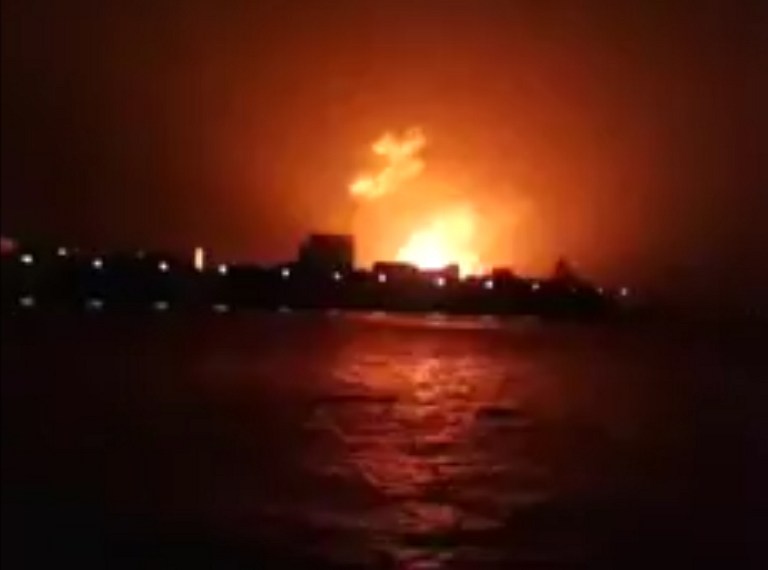SUMMARY
This is AI generated summarization, which may have errors. For context, always refer to the full article.

MUMBAI, India – Indian divers and engineers struggled Thursday, August 15, to salvage a submarine that exploded with 18 crewmen on board, as the prime minister voiced “deep regret” over the accident which is feared to have left no survivors.
The fully armed INS Sindhurakshak, returned by its original manufacturer Russia earlier this year after a major refit, went up in flames at a Mumbai dock on Wednesday, August 14, and sank.
The disaster — considered to be the Indian navy’s worst since the sinking of a frigate by a Pakistani submarine in 1971 — has cast a long shadow over the military’s capabilities.
Divers had opened the main hatch and were seeking to secure two water-tight compartments before pumping out water to raise the diesel-powered vessel.
“They are attempting to empty the water that has entered the submarine and make it lighter so that it refloats,” a senior naval officer told AFP.
Prime Minister Manmohan Singh, addressing the nation in the traditional Independence Day speech at the Red Fort monument in Delhi, lamented the tragedy, which represents a major setback for the rapidly modernizing navy.
“We have deep regret about the accident involving INS Sindhurakshak in which 18 of our brave men are feared to have been martyred,” he said.
“The accident is all the more painful because the navy had recently achieved two major successes in the form of its first nuclear submarine, INS Arihant, and the aircraft carrier, INS Vikrant,” Singh said.
In recent days India launched its first domestically produced aircraft carrier and began sea trials for the first Indian-made nuclear submarine, trumpeted as a “giant stride” for the country.
Newspapers mourned the loss of the submarine on their front pages. “Navy Catastrophe”, said the Indian Express in a headline.
“Defender of the seas meets fiery end,” said The Hindustan Times, while the Times of India called it India’s “worst peacetime disaster”.
The world’s biggest democracy has been expanding its armed forces to upgrade its mostly Soviet-era weaponry and respond to what many in India perceive as a growing threat from regional rival China.
Defence Minister A.K. Antony described the explosion as the “greatest tragedy in recent time”.
Navy chief D.K. Joshi said Wednesday that no sign of life had been detected on board since the submarine was engulfed in a fireball.
“While we hope for the best, we have to prepare for the worst,” he told reporters in Mumbai, adding that some crew might have found air pockets but “the indicators are negative”.
Defence ministry spokesman Sitanshu Kar told Agence France-Presse late Wednesday: “We have not got the bodies so we can’t say they are dead. But we are fearing the worst.”
Amateur video footage showed a fireball in the forward section of the Sindhurakshak, where torpedoes and missiles are stored as well as battery units.
A board of enquiry has been set up to probe the cause of the explosions, and will look at the possibility of sabotage, but “the indicators at this point of time do not support that theory”, Joshi said.
Other sailors on vessels berthed near the INS Sindhurakshak were admitted to a navy hospital in Mumbai with burns.
In February 2010, the vessel suffered a fire while docked in Visakhapatnam city in southern India, killing a 24-year-old sailor.
The Indian navy has 15 submarines, but just seven to nine are operational at any one time because of regular repair and refitting operations. Many are at the end of their service lives and have been given extensions.
Joshi admitted that the loss of the Sindhurakshak had left a “dent” in the navy’s capabilities.
The disaster has echoes of a tragedy in Russia in 2000 when the Kursk nuclear submarine sank in the Barents Sea with the loss of all 118 crew on board.
Russia is still the biggest military supplier to India, but relations have been strained recently by major delays and cost overruns with a refurbished aircraft carrier, the INS Vikramaditya. – Rappler.com
Add a comment
How does this make you feel?
There are no comments yet. Add your comment to start the conversation.